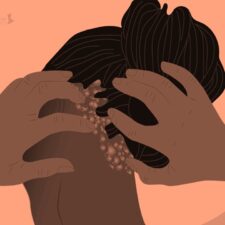
Migraines affect more than 39 million Americans, often disrupting daily life with pain, sensory sensitivity, nausea, and cognitive fog, according to migraine.com. While medications and medical interventions are vital, research increasingly shows that nervous system regulation—shifting the body away from fight-or-flight activation into parasympathetic calm—can help reduce both the frequency and severity of migraine attacks.
7 Proven Tips to Calm Your Migraine Attacks
Vagus Nerve Stimulation (VNS)
The vagus nerve is a communication superhighway linking the brain to the gut, heart, lungs, and immune system. It helps regulate inflammation, stress, and even pain processing—all central to migraine onset. When the vagus nerve is underactive (low “vagal tone”), stress builds unchecked, raising the risk of migraine.
- Medical VNS devices: Non-invasive VNS (nVNS) handheld stimulators are FDA-cleared for cluster headaches and migraines. Studies show nVNS can reduce migraine frequency and severity, especially when combined with medication.
- At-home vagal stimulation: Everyday practices such as humming, chanting, gargling, or singing vibrate the throat and stimulate vagus pathways, while improving heart rate variability—a measure of nervous system resilience.
- Why this matters for migraines: By dampening inflammation and promoting relaxation, vagus nerve activation can interrupt the feedback loop of stress → vascular changes → migraine onset.
Try this: Inhale deeply, then hum on a long exhale. Repeat for two to three minutes. This not only calms nerves but may also reduce pre-migraine tension.
Breathwork
The way you breathe directly affects your nervous system. Shallow chest breathing reinforces anxiety and fight-or-flight responses, while slow, deep breaths stimulate the vagus nerve and parasympathetic state.
- Diaphragmatic (belly) breathing: Expanding the belly during inhalation increases oxygen intake and signals safety to the brain, lowering stress hormones.
- Box breathing (inhale 4 seconds, hold 4, exhale 4, hold 4) is used by Navy SEALs to regulate stress.
- Alternate nostril breathing from yoga has been shown to balance hemispheric brain activity and calm overstimulation—helpful for migraines triggered by sensory overload.
Migraine tip: Try breathwork during the aura phase or at the first sign of tension to prevent escalation.

RELATED: Headache Location Meaning: Know What’s Causing It
Mindful Movement
Exercise often prevents migraines—but high-intensity workouts can trigger them for some. The solution? Mindful, gentle movement that reduces stress while avoiding overexertion.
- Yoga: Multiple clinical trials show yoga reduces migraine frequency and improves quality of life, likely due to vagus stimulation and improved blood flow regulation.
- Tai chi or qigong: Gentle martial arts that emphasize breath-body coordination, balancing the autonomic nervous system.
- Walking in nature: Combines mild exercise with sensory calm and exposure to natural light, which helps regulate circadian rhythms tied to migraine onset.
Tip: Aim for 20 minutes of mindful stretching or walking daily, focusing on breath and body awareness rather than performance.
Cold Water Therapy
Migraines are linked to changes in blood vessel dilation and inflammation. Cold exposure is thought to work by reducing vascular inflammation and numbing nerve pain pathways.
- Evidence: A study of cold therapy showed 77 percent of migraine sufferers reported relief when applying cooling to the neck and head.
- Ice caps and cooling wraps: Commercial products fit around the head/eyes and provide steady cooling, often reducing attack duration.
- Cold showers or plunges: Emerging evidence suggests cold showers may reduce stress hormones (cortisol) while stimulating the vagus nerve.
Caution: For some, extreme cold worsens migraine pain. Start with mild cooling (ice packs on the neck or temples) and adjust as needed.
Singing and Humming
Your voice is a free tool to hack your nervous system. Singing and humming activate the vocal cords, diaphragm, and throat muscles, all of which stimulate vagus pathways.
- Neurological effect: This vibration improves vagal tone, lowers heart rate, and reduces anxiety.
- Emotional benefit: Singing releases endorphins and oxytocin, creating feelings of safety and connection.
- Migraines: Since stress and tension are major triggers, integrating daily vocal exercises can create resilience against attacks.
Practice: Hum your favorite tune while driving or showering. Even five minutes daily can strengthen your nervous system.
Laughing
Laughter isn’t just fun—it’s physiological medicine.
- Mechanism: Laughter increases oxygen intake, stimulates heart and lung function, and triggers vagus nerve activity. It also lowers stress hormones like cortisol and boosts mood-elevating endorphins.
- Why it matters for migraines: Stress is one of the most common migraine triggers. Laughter directly counteracts stress pathways, reducing tension in both the mind and body.
- Research: A study on “laughter therapy” found participants experienced lower perceived pain and improved resilience against stress-related symptoms.
In practice: Watch a 10-minute comedy video during your lunch break or chat with a funny friend. Build laughter into your daily routine.
RELATED: 5 Reasons Why Your Headache Won’t go Away!
Biofeedback
Biofeedback is one of the best-researched non-drug interventions for migraine. It teaches patients to consciously control normally automatic processes like muscle tension, skin temperature, and heart rate.
- Muscle tension (EMG) biofeedback: By monitoring forehead or shoulder tension, patients learn to release tightness, preventing the cascade into migraine pain.
- Thermal biofeedback: By warming the hands (a parasympathetic response), patients counteract stress-induced vasoconstriction linked to migraines.
- Efficacy: Clinical trials show biofeedback can reduce migraine frequency by 45–60 percent, similar to preventive medications.
How to start: Work with a certified biofeedback therapist or use consumer-grade devices that track HRV (heart rate variability).

Daily Routine Example
Here’s how someone with migraines might integrate these seven tools into daily life:
- Morning: Begin with five minutes of deep breathing and humming to set a calm tone.
- Midday: Take a mindful walk outside, practicing slow breathwork.
- Afternoon (if stress rises): Apply a cooling pack to the back of the neck or try a quick cold shower.
- Evening: Engage in light yoga with chanting or humming.
- Before bed: Use biofeedback (or guided relaxation) to release tension.
- Anytime: Seek out laughter—funny videos, conversations, or podcasts.
Migraines often feel uncontrollable, but you do have influence over your nervous system. By incorporating practices like vagus nerve stimulation, breathwork, mindful movement, cold therapy, singing, laughter, and biofeedback, you can strengthen your body’s resilience and reduce your migraine burden.
These tools don’t replace medical treatment—but they empower you to engage your body’s natural calming systems, offering another layer of protection against migraine’s disruption.









